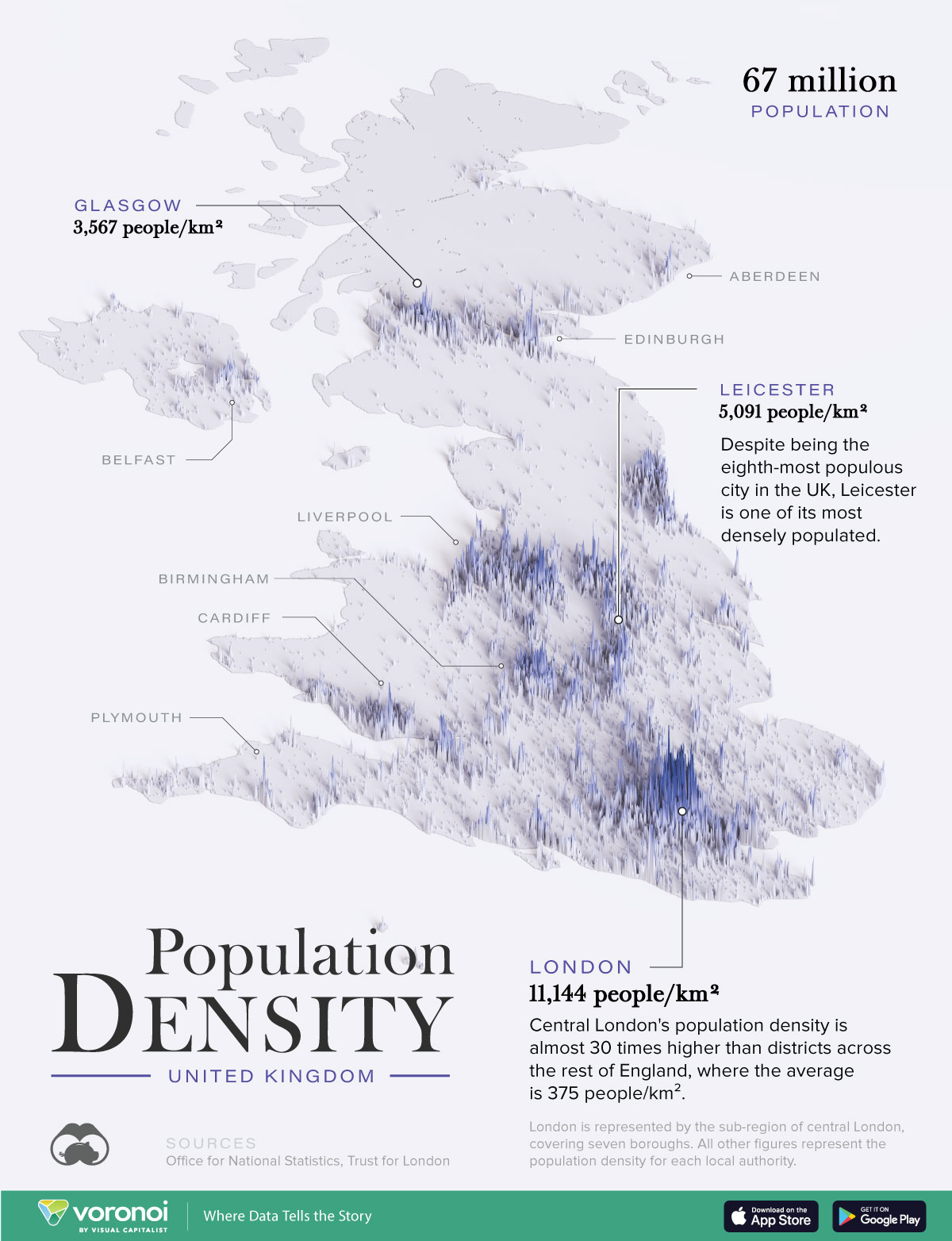![]()
See this visualization first on the Voronoi app.

Use This Visualization
Mapped: The Population Density of the UK
This was originally posted on our Voronoi app. Download the app for free on iOS or Android and discover incredible data-driven charts from a variety of trusted sources.
The UK stands as the world’s sixth-largest economy, housing a population of 67 million people.
Across the countries of England, Scotland, Wales, and Northern Ireland, the population is most heavily concentrated in London and South East England. These two regions are home to roughly 27% of the UK population, and contribute 39% to the UK’s GDP.
The above graphic shows the population density of the UK, based on data from various government sources.
Ranked: The Most Populous Cities in the UK
Below, we show the top 10 biggest cities in the UK by population:
| Rank | City | 2024 Population Estimates |
|---|---|---|
| 1 | London | 7,556,900 |
| 2 | Birmingham | 984,333 |
| 3 | Liverpool | 864,122 |
| 4 | Nottingham | 729,977 |
| 5 | Sheffield | 685,368 |
| 6 | Bristol | 617,280 |
| 7 | Glasgow | 591,620 |
| 8 | Leicester | 508,916 |
| 9 | Edinburgh | 464,990 |
| 10 | Leeds | 455,123 |
London, home to over 7.5 million residents, is one of the most linguistically diverse cities in Europe, where 300 languages are spoken.
Overall, London has a population density that is 15 times greater than districts across the rest of England. Moreover, central London, which covers seven primary boroughs, is nearly 30 times as densely populated, at 11,144 people per km². In comparison, the remaining districts of England average 375 people per km², according to the most recent government figures.
Despite Brexit causing setbacks in its business environment, London ranks among the top financial centers in the world. Notably, the financial and professional services sector makes up more than 50% of London’s labor force.
As the UK’s second-most populous city, Birmingham was known as the “workshop of the world” starting in the 18th century. As an industrial powerhouse, Birmingham was home to the invention of the steam engine, and become known for its metalworking industry. With a population density of 4,323 people per km², Birmingham is a leading manufacturer of vehicles, weapons, and electrical equipment today.
Outside of England, Glasgow is the most densely populated city, with 3,567 people per km². Across its diverse economy, Glasgow stands as a hub for shipbuilding, satellite construction, life sciences, and culture.
More broadly, the urban population of the UK outnumbers the rural population by more than fivefold, following decades of rural population decline. There are also clear divides in regional economic growth. Between 2024 and 2027, London and South East England are projected to see the most robust growth overall, while the slowest growth is forecast in Aberdeen, Blackpool, and Warrington, all located to the north.
The post Mapped: The Population Density of the UK appeared first on Visual Capitalist.